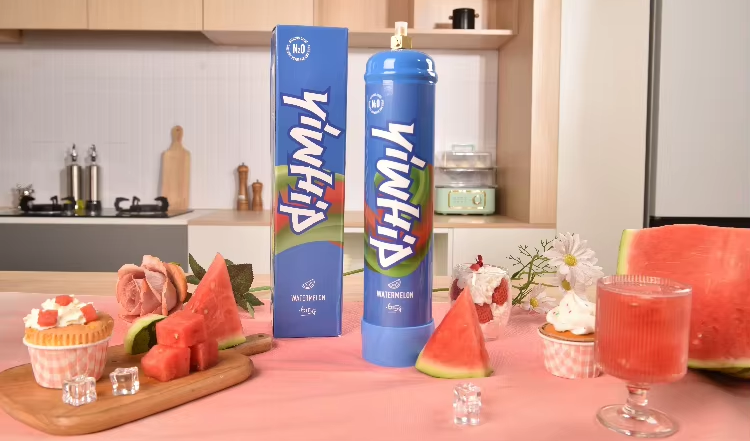The 2024 Buyer's Guide to Nitrous Oxide Chargers: Everything You Need to Know
Nitrous oxide (NOS) has long been a go-to solution for automotive enthusiasts looking to boost their vehicle’s performance—fast. Known for its quick-hitting power and relatively easy installation, nitrous oxide systems have seen considerable advancement over the years. As we step into **2024**, both novice tuners and veteran racers are taking a closer look at how nitrous oxide systems work, what the new standards are, and importantly, how to use them safely and efficiently. Whether you drive a streetcar or a weekend strip machine, adding an NOS system could be one of the best modifications you make this year.
What is a Nitrous Oxide Charger?
A nitrous oxide charger is part of the overall nitrous oxide system installed on an engine. These small, pressurized canisters hold liquid nitrous oxide which is released when the activation switch is pressed. Once dispensed, it’s atomized in the intake manifold (wet systems) or near the intake valves (dry systems) to cool incoming air and provide increased oxygen content to support combustion of additional fuel, resulting in increased engine output.
How Does it Work Under the Hood?
Beneath the complexity lies some solid engineering science. Combustion engines need oxygen, spark, and fuel—Nitrous systems primarily focus on enriching the “oxygen" side of the equation. Because nitrous molecules (N₂O) contain a greater ratio of oxygen than standard ambient air, they help burn more fuel quickly without requiring large-scale turbo upgrades or intercooler investments upfront.
- Nitrous bottles typically come in varying sizes like 10lb, 15lb, and 20lb
- They must stay cold for safe usage—excessive heat raises pressure dangerously
- Usage requires proper calibration with nitrous jets that meter release levels
Popular Systems & Applications in 2024
Nitrous setups today come in a variety of options suitable for nearly every budget and goal. The most common classifications are as follows:
- Used mainly in boosted, supercharged, or naturally aspirated drag cars
- Sprays fuel along with nitrous directly into cylinder ports
- Higher potential risk but offers unmatched horsepower gains if tuned right
- Simpler installations
- Adds extra oxygen while fuel comes strictly from injectors (requires tuning)
- Ideal for stock vehicles not designed originally for massive HP spikes
- Highest cost but most accurate delivery to each cylinder
- Tuning is highly specific per port
Regardless of which style you go with, having compatible nitrous oxide bottle charges and nozzle settings plays a crucial role.
Top Brands Offering High-End Chargers in 2024
Not all nitrous suppliers are created equal — here are several major industry names trusted across the U.S. racing scene and car-mod culture communities for quality and consistent output:
- Nitrous Express (NX) – Recognized globally among drifters and track junkies.
- ZEX Performance – Favored by off-roaders due to high resistance to rough weather exposure and vibration durability.
- Vortech Engineering – Integrates nitrous well with their forced-air products; excellent combo kits exist.
- JEGS Performance – Great place for beginners to explore starter kits or upgrade older units with 2024 compatibility models.
Tip: When sourcing replacement nitrous cans, consider checking local supplier certifications and ensure you are buying DOT-approved containers rated safe at temperatures commonly encountered even in high-performance climates like Arizona during June!
Evaluating Nitrous Chargers: Factors To Consider Before Buyings
Selecting nitrous chargers isn’t just about price or convenience. With many choices floating online and offline shops, buyers must match the product specs against their current vehicle type, existing ECU control software setup, available mounting spaces (typically located inside trunks or framerails under hoods for weight balance), as well as driving intentions such whether for daily drives vs drag-strip events only. Some of the vital selection parameters include:
- Tank capacity (lb rating per charge): Larger tanks mean less time spent changing canisters mid-event. This helps professional drifter crews and racers save minutes otherwise consumed refueling after runs.
- Bottleneck restrictions: Not all tanks deliver same pressure rates. Bottles rated up through higher psi tolerance (especially above ~950 psi max operational threshold), especially built to military or aerospace-grade standards will perform better under heavy discharge sequences.
- Nozzle flow rates: Matching your nitrous oxide jet size with tank output allows optimal blending between oxygen-rich N2O bursts plus precise timing for spark/fuel curve synchronization.
- Burst capability: If planning for longer engagements beyond brief quarter-mile shots, larger nitrous reserve volumes offer extended runtime, helping sustain peak boost intervals.
Comparison Chart of Top Nitrous Charges (10lb -20lb Tanks)
| Product | Capacity | Material | Max Output (psi) | Application Suitability | Avg Price Range (USA Market) |
|---|---|---|---|---|---|
| Zex Pro Series Bottle | 20lb Liquid Nitrous Oxide | 6AL-4V Aircraft Titanium Alloy | 1220 | Road Race & Track Days | $169 – $185 |
| Stages N20 Premium Fill | 10 lbs Reusable Tank + Charge | Aero-Grade Aluminum Alloys (with Teflon Liners) | 855-1000 depending on coolant temps | New Users / Budget-Friendly Builds | About $118 base retail pack |
| Holley UltraSafe 15L Canister | Certified refillable bottle holds approx 15lbs net NOx fluid | Treated Steel Shell w/Teflon Spray Core Coating Inside | 1,078 | Off Road Vehicles and Rally Trucks | ~$149 MSRP + Refill Fees Apply |
Legal Restrictions And Installation Safety Precautions In US States (By State Guidelines)
It's essential to verify legality based on current motor-vehicle department rulings:- OBDII Compatibility Checks: In California and New York, strict emission testing requires certain OBD compliant controls, which may conflict directly if tampering with airflow or emissions pathways without certified bypasses or module integration.
- Mechanical Reliability Checks: Some tracks require prior inspections including pressure tests, valve operation diagnostics and bottle integrity evaluations.
- Public Road Use Limitations: Most states don't outright restrict ownership or purchase of N2O, but discharging during non-track conditions might attract fines from law enforcement concerned about public misuse or dangerous behavior.

